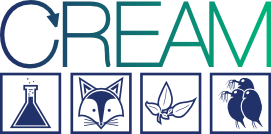Extrapolating from local to regional effects of chemical stressors: Combining population models with spatio-temporal pesticide exposure patterns
Andreas Focks, Postdoc project, 01.02.2011 – 31.07.2013
Aquatic Ecology Group, Wageningen University, The Netherlands
Supervisor: Paul van den Brink (Wageningen University)
Co-supervisor: Colin Brown (UYORK)
Associated partners: Bayer; UBA
This project investigated if and how effects of chemical stressors on populations and population recovery differs between local and regional scales. The objective was to elucidate whether current risk assessment schemes address the risk of chemical stressors at a landscape scale appropriately. Characteristics of chemical stressors, and species and the spatial setup of landscapes might influence population effects and recovery at the regional scale and were taken into account.
Specific Hypotheses to be Tested/Questions to be Addressed:
- Would local reproduction or different modes of dispersal (walking, swimming, drift, aerial) determine recovery on a regional scale after disturbance?
- How do different chemical fate properties and herewith exposure patterns relate to the effects and the recovery from effects?
- How do differences in landscape infrastructure (ecological connectivity) influence the recovery at the regional scale?
- Which species, landscape and chemical traits are appropriate ecological, infrastructural and stressor indicators for risks and effects of pesticides on a regional scale?
Approach :
Results of chemical fate simulations in water were used as exposure patterns in effects simulations with NetLogo/MASTEP models. Special consideration was paid to the influence of pesticide properties on the magnitude and duration of effects, and on the influence of species traits and landscape properties on effects and recovery.
On a technical level, the fate simulations were calculated as separated module (e.g. with CASCADE-TOXSWA) and the effects models on a regional scale were realised as Java-framework via the Java API of NetLogo.
Technical documentation of the upscaling framework
A user manual for the Java framework is under development. The TRACE document for a case study on pyrethroid effects in potato crop contains many informations, though.
The Java sources for the upscaling framework can be found here (ZIP).
Examples for
- landscape definition
- pre-calculated exposure concentrations
- and the used NetLogo model can be downloaded.
A more thorough documentation of the model is planned. Please check http://www.pesticidemodels.eu/ for more information.
Results
1) A sensitivity analysis has been performed for the MASTEPregional framework for a small water network.
Results were presented at
- the 6th SETAC world congress, 2012 (Poster pdf).
- the 33rd annual meeting of SETAC North America (Slides pdf)
2) The MASTEPregional framework was applied for the simulation of effect and recovery dynamics of an aquatic isopod for a scenario where a pyrethroid insecticide was applied in potato crops in a typical Dutch agricultural landscape.
Results are presented
- at 23rd SETAC Europe congress, Glasgow (UK) (Poster pdf)
- as a peer-reviewed paper (preprint pdf | accepted version)
Contact information: Andreas Focks works now as Ecological Modeller at Alterra, Wageningen, in the team Environmental Risk Assessment (ERA). He still works on modelling effects of chemicals on aquatic organisms, now including toxicokinetic-toxicodynamic modelling approaches, more detailed traits-based analysis and more.
Last changes: 11/02/2014

